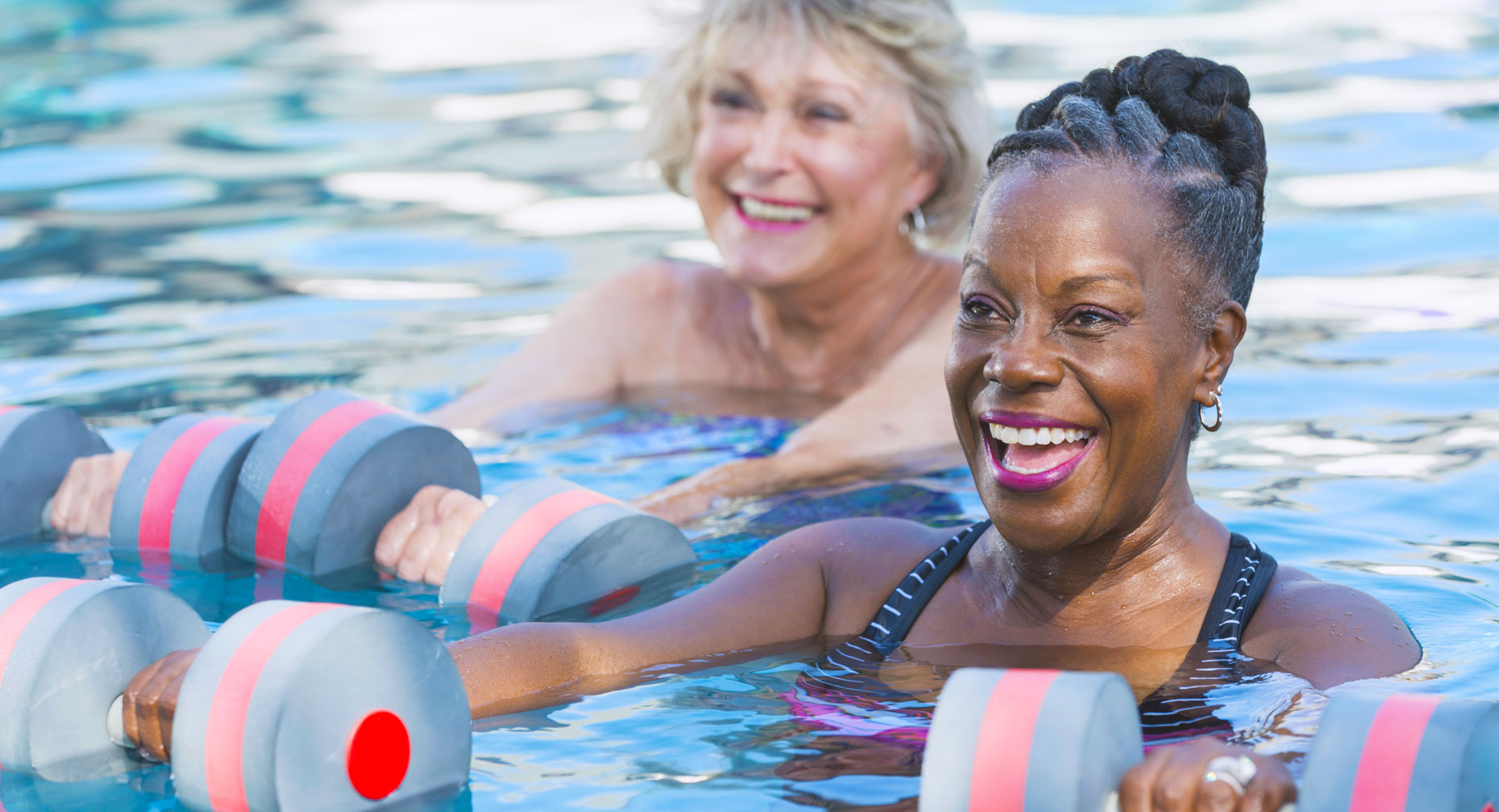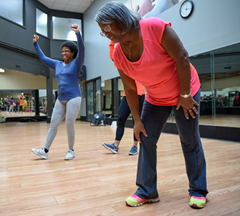- Arthritis/Osteoarthritis
- Bone and Joint Health
- Fitness and Exercise
- Health Topics
- Joint Pain/Pain Management
Workout Work-Arounds When Your Body Is Challenged

Find Your Perfect Match
Answer a few questions and we'll provide you with a list of primary care providers that best fit your needs.
You know exercise is good for you. But what if your knees, hips, or back ache from arthritis? Or extra pounds make exercise challenging? Or you’re wheelchair-bound or have a mobility-limiting condition?
When it comes to exercise, these issues are not deal breakers, says Greg Schultz, physical therapist at the Center for Sports Medicine at Upper Valley Medical Center.
In fact, avoiding exercise leads to greater limitations. “You’ll lose a lot of muscle mass and your joints will atrophy,” he says. “Over time you will lose strength.” Your heart health will decline, too. Plus, you’ll miss out on the mood elevating effects of physical activity.
Instead of passing up exercise, he recommends, change it up. And try some workout work-arounds.
“There are lots of exercises that are weight-bearing and increase pain in the joints.” But alternatives, he says, such as bicycling, swimming, and water aerobics “take weight off the knees.”
Matthew Lawless, MD, explains that because of the buoyancy of water, aquatic exercise puts less weight on arthritic joints, like the knees. But, he adds, it’s less effective than land exercise in strengthening muscles.
Click play to watch the video or read video transcript.
Walking is another good alternative that is relatively low impact and aids in weight loss, which reduces joint stress. As you gradually increase the length of your walks, you’ll strengthen your leg muscles, improving your balance, Schultz says.
“Muscle soreness is normal after exercise,” Schultz says. “But if you have joint pain, modify your exercise.”
Take Your Exercise Sitting Down

But what if you’re recovering from an injury or have a condition that rules out walking?
You can exercise sitting down in a chair or wheelchair. Here are a few suggestions:
- Straight leg raises. “You can add ankle weights – whatever you can tolerate,” Schultz says.
- Arm ergometers. These are pedals you turn with your hands and arms to give your heart an aerobic workout.
- Isometric exercises. For example, you push against an immovable object or body part, such as hand against hand, without moving joints. This maintains strength and prevents muscle deterioration.
- Bicep curls. Or other repeated lifting exercises with dumbbells or household items like soup cans. The tension of resistance bands secured to stationary objects offers similar muscle-strengthening results.
- A recumbent bike. This provides back support along with an aerobic workout.
- Flexibility exercises. like stretching and yoga, to prevent stiffness, reduce pain and enhance your range of motion.
Other Workout Workarounds
Similarly, if you have upper body limitations – a shoulder injury or arthritis, for instance – focus your workout on your legs and core.
You can modify exercises to compensate for joint pain:
- Squats. These can strain knee joints, but a physio ball can take off some of the strain and help support your lower back. As you stand with your back against a wall, squat with the ball positioned against your lower to mid back. Or you can limit your squats to a tolerable range.
- Body weight exercises, such as pushups and planks. These can be modified so that your forearms bear the weight, instead of your hands and wrists – or knees, instead of feet.
Schultz recommends consulting with your primary care provider or physical therapist to find exercises well suited to your needs and physical limitations. “It’s important to get professional help to target areas that need strengthening,” he said.
How do you know if you’re overdoing exercise? “Muscle soreness is normal after exercise,” Schultz says. “But if you have joint pain, modify your exercise."
Find Your Perfect Match
Answer a few questions and we'll provide you with a list of primary care providers that best fit your needs.
Source: Greg Schultz, physical therapist, Center for Sports Medicine at Upper Valley Medical Center; Helpguide.org; Arthritis Foundation; National Center on Health, Physical Activity and Disability; Daily Burn






